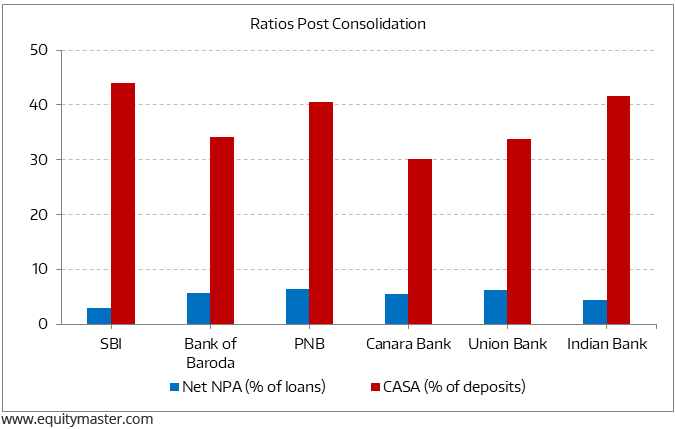India's Third Giant Leap
This Could be One of the Biggest Opportunities for Investors
- Home
- Todays Market
- Indian Stock Market News September 4, 2019
Sensex Remains Rangebound; Telecom and Banking Stocks Gain Wed, 4 Sep 12:30 pm
Stock markets in India continue trading flat. The BSE Sensex is trading up by 73 points and the NSE Nifty is trading up by 17 points. The BSE Mid Cap index is trading down by 0.5%, while the BSE Small Cap index are trading down by 0.2%.
Among the sectoral indices, consumer durables stocks and automobiles stocks are witnessing maximum selling pressure. Telecom stocks and bank stocks are trading in green.
In the news from the currencies market. The rupee today opened 21 paise higher at 72.18 against the US dollar. However, minutes later the currency slipped to 72.26 level.
The domestic unit on Tuesday tumbled 99 paise to settle at 72.39. That marked its worst single day fall since August 5 and the lowest closing level since 13 November 2018.
The depreciation in rupee's value came on the back of heavy sell-off in the domestic equity market and a weak macro environment.
In the capital market, foreign investors (FPIs) continued their selling spree as they offloaded Rs 20.2 billion on Tuesday while domestic institutional investors (DIIs) bought equities worth Rs 12.5 billion.
Speaking of currencies, Vijay Bhambwani, editor of Weekly Cash Alerts, tells you the main reasons why not to trade commodities and currencies the same way you would trade equities. Here's an excerpt of what he wrote...
- Currencies are traded in pairs and the most liquid is the USDINR. Currencies are traded in four decimal points just as bonds are. The international derivative trader's association has indicated that forex may be traded in 6 decimals in the coming few years.
It takes months sometimes for the currency pair to pass the next round figure, say from 70 to 71.
Can you really trade commodities and currencies alike or for that matter, equities and currencies alike? Definitely not!
To know more, you can read Vijay's entire article here: Is Trading in Equities, Commodities, and Currencies the Same?
Speaking of the economy as a whole, Richa Agarwal reveals her investing strategy amid all gloom and doom.
She also talks about the stock she is looking at in such times. She is very cautious in her approach and looks for the stocks that survive in all the market cycles.
Tune in to find out...
Moving on to the news from the banking sector. PSU bank stocks were under pressure yesterday after Finance Minister Nirmala Sitharaman on Friday announced the merger of 10 public sector banks into four entities to make them stronger and sustainable as well as increase their lending ability.
Shares of Punjab National Bank, Indian Bank, Oriental Bank of Commerce and Canara Bank fell between 5% and 9% in trade yesterday.
While Punjab National Bank share price fell up to 8.6%, Indian Bank share price lost 7.9% on BSE.
Nifty PSU Bank index fell up to 4% to 2,376 level.
The merger announcement is seen as negative for public sector banks in the short term since they will see pressure on profitability front initially. Lack of clarity on merger ratio also led investors moving out of the PSU banks counter.
Punjab National Bank would be merged with Oriental Bank and United Bank to make it the second largest PSB with Rs 18 trillion business and second-largest branch network in India.
Similarly, Canara Bank and Syndicate Bank would be consolidated to form the fourth-largest public-sector bank with business of Rs 15.2 trillion. Union Bank of India, Andhra Bank and Corporation Bank would be merged to make it the fifth-largest bank of the country with business of Rs 14.6 trillion.
Among others, Indian Bank and Allahabad Bank will be merged into one entity, while Bank of India and Central Bank of India would remain independent.
Needless to say, most investors would be worried about the level of NPAs and current and savings accounts (CASA) of the merged entities.
Lower NPA ratio and sustenance of high CASA, in the future, could signal the banks' fitness levels to lend more.
India's Top 6 Public Sector Banks Are Getting Fitter
Here's what Tanushree Banerjee wrote about the above development in today's edition of The 5 Minute WrapUp...
- But what could go unnoticed is the efficiency potential of the merged entities.
Post-merger, the employee per branch ratio of the consolidated PSU entities could be in the range of 7 to 9 per branch. This would be almost half that of their private sector counterparts like HDFC Bank and Kotak Bank.
Leaner operations would mean use of technology to support growth.
So, I would not be surprised if the PSU entities leverage technology at a much bigger scale than their private sector peers, in a few years
To know what's moving the Indian stock markets today, check out the most recent share market updates here.
For information on how to pick stocks that have the potential to deliver big returns, download our special report now!
Read the latest Market Commentary



Equitymaster requests your view! Post a comment on "Sensex Remains Rangebound; Telecom and Banking Stocks Gain". Click here!
Comments are moderated by Equitymaster, in accordance with the Terms of Use, and may not appear
on this article until they have been reviewed and deemed appropriate for posting.
In the meantime, you may want to share this article with your friends!